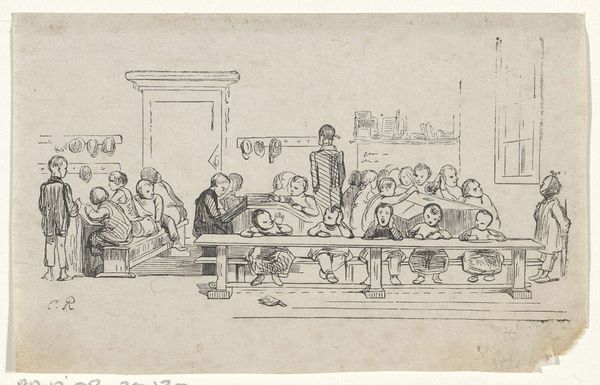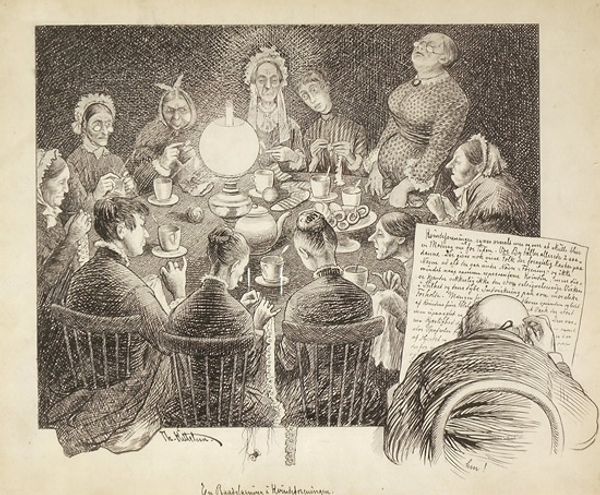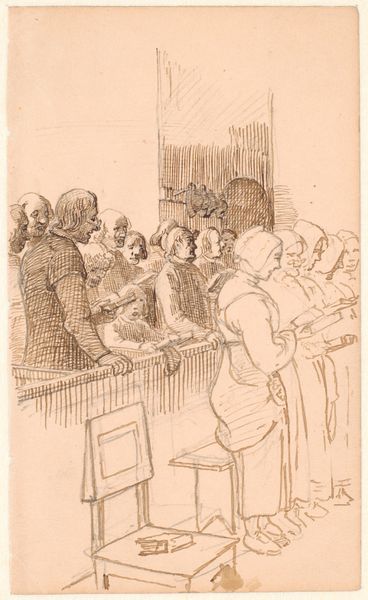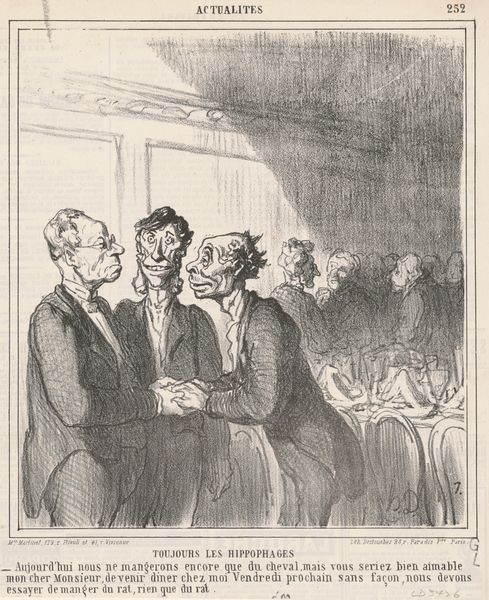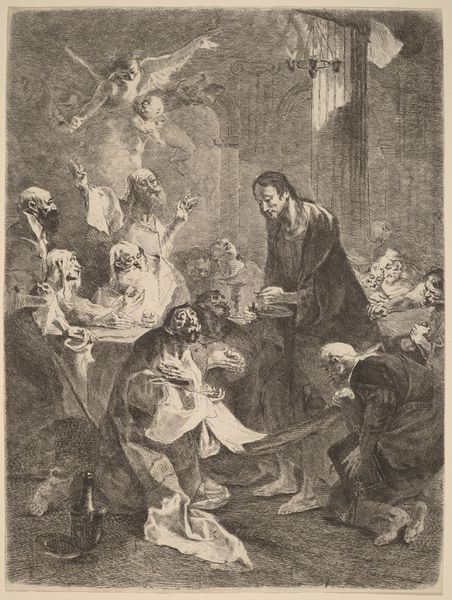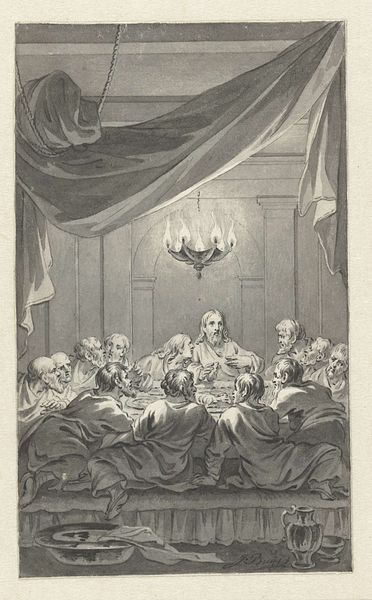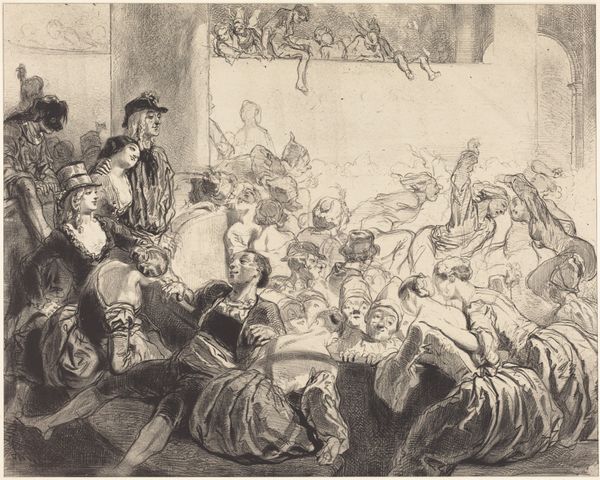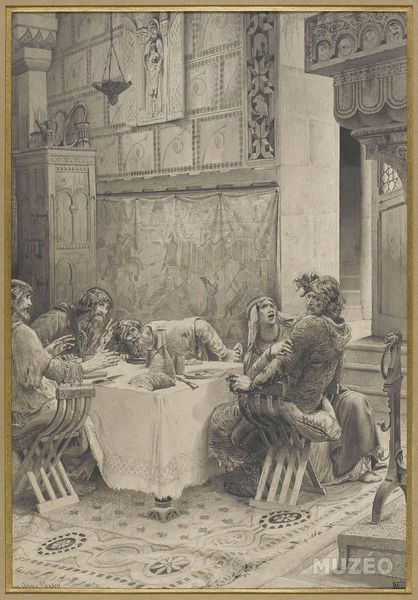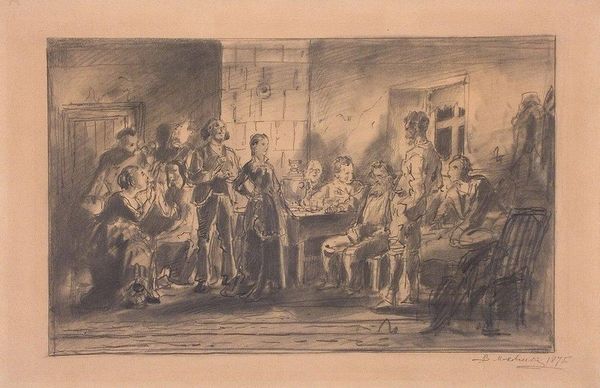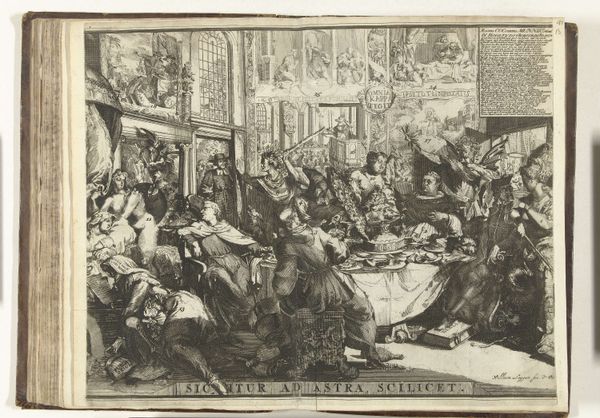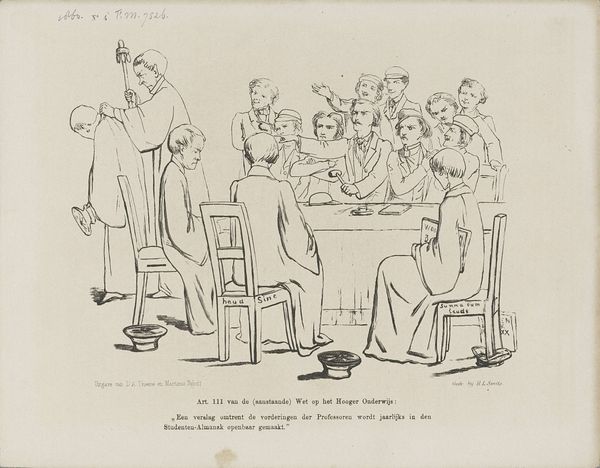
drawing, print, ink
#
drawing
#
narrative-art
# print
#
german-expressionism
#
ink
#
genre-painting
Copyright: National Gallery of Art: CC0 1.0
Curator: Welcome. We’re standing before Adolf Ferdinand Schinnerer’s "Das Gastmahl," also known as "The Dinner Party," possibly from 1920. Executed in ink, it's a drawing and print that pulls us into an intriguing scene. Editor: Immediately, I'm struck by the density of the composition—a mass of bodies crowded around a long table. The monochromatic palette and chaotic linework evoke a feeling of anxiety and perhaps suppressed rage. It feels very much a reflection of its time, full of the anxieties simmering post-WWI. Curator: Indeed. The application of ink, seemingly frantic, lends a raw, unfiltered quality to the depiction of this genre scene. Consider the formal arrangement: the elongated table dominates the pictorial space, serving as a stage for this ambiguous drama. Observe the contrasting light and shadow, strategically deployed to highlight key figures and gestures. Semiotically, we might interpret the table as a symbolic space of gathering. Editor: I'd argue it is less about mere "gathering" and more about power dynamics and perhaps social breakdown. Look at the varied expressions, or lack thereof. The people are rendered with a certain degree of uniformity and almost violent stylization. This was a volatile period in Germany, with economic devastation, political instability, and burgeoning radical movements on both the left and the right. It begs us to ask: Who is at this dinner? And what’s really being served? Curator: It's valid to interpret the expressions as reflecting the period's unrest. But let’s not overlook the pure compositional choices. See how Schinnerer’s use of line directs the eye throughout the tableau. The table itself acts as a structural spine, leading to the figures receding into the background, framed by architectural shapes that emphasize confinement. Editor: Confinement, exactly. I see how the space suggests societal constraints and perhaps the futility of collective action in a time of immense stress. I think we can analyze those strokes that describe surfaces to expose a specific kind of early 20th-century societal unease—to really excavate meaning. Curator: I appreciate that tension you are raising. It helps me see those intentional disruptions within the linear structure. To summarize, in his piece "Das Gastmahl," Schinnerer gives us not merely a snapshot of a meal, but a deeply felt, stylized view on post-war anxiety. Editor: Absolutely. This work serves as an unnerving glimpse into a society on edge, a visual scream rendered with a graphic intensity that is truly arresting.
Comments
No comments
Be the first to comment and join the conversation on the ultimate creative platform.

